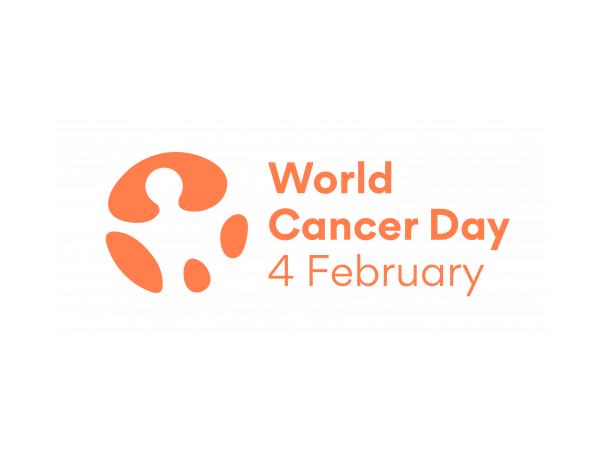Reflecting on the Racial Disparities in Liver Cancer
Liver cancer is the second most common cause of cancer-related deaths worldwide. In 2021, it is estimated that more than 42,000 people will be diagnosed with the disease and approximately 30,000 will die because of it in the United States.
Liver cancer incidence is on the rise, with ethnic and geographic disparities.
The roots of these disparities are complex. The established risk factors for hepatocellular carcinoma (HCC)—the most common type of adult primary liver cancer—including exposure to aflatoxins, hepatitis B and C, alcohol use, and nonalcoholic fatty liver disease, do not entirely explain these differences. Additional factors play an important role and researchers are now studying genetic, biological, behavioral, socioeconomic, and environmental factors, as well as differences in access to health care.
The disproportionate impact of liver cancer on minorities and disadvantaged communities was one of the themes at the recent AACR Virtual Conference on The Science of Cancer Health Disparities in Racial/Ethnic Minorities and the Medically Underserved.
Searching for the Roots of Cancer Disparities
Presenter Cathrine Hoyo, PhD, professor at North Carolina State University, and her team are analyzing the potential link between prenatal and early-childhood environmental exposures and adulthood disease that could affect liver cancer risk, within the frame of the Developmental Origins of Health and Disease model.
Their working hypothesis is that exposure to pollutants could cause molecular or epigenetic alterations that would be propagated through cell division and retained within the body, causing disease. Various epidemiological studies have shown that low birthweight and childhood body mass index are correlated with liver and other gastrointestinal cancers.
The group is moving beyond these observations to gain mechanistic insights that could help plan for liver cancer prevention through the Newborn Epigenetic Study (NEST), which has followed a cohort of more than 2,500 mother-child pairs in North Carolina since 2005 to evaluate the effects of various environmental and nutritional factors.

Hoyo’s team takes a double-pronged approach, studying the impact of exposure to environmental contaminants on liver cancer incidence through age-appropriate outcomes including birthweight, growth trajectories, and metabolic dysfunctions such as obesity. They also dissect the molecular alterations that link exposures to the disease.
“As with many chronic diseases, there is a long time between exposure and clinical outcomes, so our lab seeks to identify exposure-associated molecular marks to connect environmental contaminants to phenotypes of interest,” said Hoyo.
Less than 10 percent of the tens of thousands of chemicals present in the environment are tested for their effects on human health. Importantly, higher pollutant body burdens are found in African Americans and Hispanics.
Measuring the concentrations of metals such as lead, cadmium, mercury, and arsenic in the maternal blood at three months of gestation in the NEST cohort and correlating those measures with the address where the women live, the researchers found that those with elevated lead and cadmium levels clustered together in some geographic areas where most residents are African American and Hispanic.
Cadmium is a highly toxic compound in very small quantities, with a wide range of health effects including kidney, bone, and lung disease. Strikingly, the areas with the highest cadmium levels also had the highest liver cancer incidence based on data from the Durham County cancer registry.
Although the cause/effect correlation remains to be demonstrated, this study revealed a link between cadmium exposure and liver cancer that especially affects certain communities.
The team is investigating epigenetic traits that alter gene expression and are induced by environmental contaminants, to evaluate whether any molecular changes are caused by cadmium and associated with liver cancer and could help develop new biomarkers for early detection.
Understanding the Systemic Barriers to Identify Interventions
Discovering the roots of liver cancer disparities is important for designing individual and structural interventions.
The laboratory of presenter Patricia Jones, MD, assistant professor at the University of Miami Miller School of Medicine, investigates interventions to target the differences in hepatitis B virus (HBV) incidence. HBV is the leading cause of HCC, responsible for more than 50 percent of cases globally.
Jones and colleagues conducted a retrospective study on 901 patients with HCC treated between 2004 and 2014 and found disparities in the prevalence of HBV and HBV treatment across different racial populations in the cohort, with African Americans having a higher percentage of infection and lower percentage of treatment.
Some of the disparities in treatment may be due to differences in access to health care. Based on the National Health Interview Survey (NHIS) data from 2019-2020, Hispanics were more often uninsured (29.3 percent) compared with Blacks (14.3 percent), non-Hispanic whites (9.2 percent), and Asians (8.8 percent).
“Without insurance, patients cannot be screened and it’s even more difficult to get treatment,” said Jones. “Even with insurance, treatment cost can sometimes be prohibitive, and patients often find themselves uninsured.”
While hepatitis B is expensive to treat, it is even more expensive to not treat. Patients with chronic hepatitis B and complications such as cirrhosis, liver cancer, or liver transplants experience higher health care costs than those with compensated liver disease.
“It is also important to engage communities at risk because community members are powerful allies to create awareness,” said Jones.
Based on the high rate of HBV-related HCC in their center, her team conducted a study with 10 focus groups to examine the perceptions of Blacks born in the U.S. or Haiti, and found a significant lack of awareness that HBV and HCC disproportionately affect Black people and limited knowledge about disease transmission. Participants felt that stigma and low access to health care might limit HBV detection. They provided useful advice on interventions that might improve the screening rates. These included community outreach efforts using mobile screening units, educational sessions targeted to various age groups, and involvement of community spokespersons who could create visibility and lend credibility to the need for HBV screening.
Based on those recommendations, Jones conducted a pilot study to assess the feasibility and acceptability of home-based HBV screening among Haitian immigrants.
“We found that 45 percent of the individuals we screened had a prior infection, highlighting the importance of screening; 49 percent were still vulnerable to infection, and only 6 percent had been vaccinated,” Jones said. “In summary, screening is necessary, feasible, and acceptable.”
The researchers now plan to scale up these structural interventions to offer HBV screening in health fairs and clinics and bring mobile screening and vaccination to vulnerable communities.



